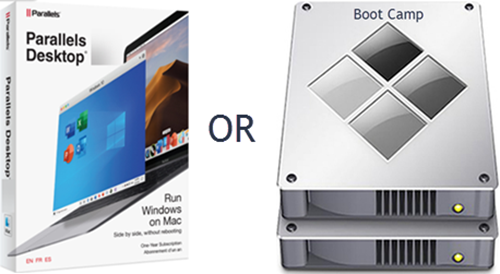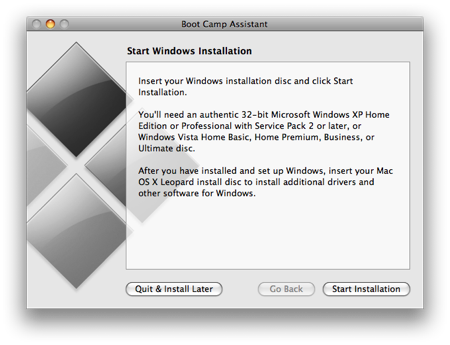


BOOTCAMP 3 FOR MAC INSTALL
Create Partition for Linuxįor the purposes of this article, I'm going to install Kali Linux, that's what I used, but installation with ANY version of Linux should work the same way.
BOOTCAMP 3 FOR MAC WINDOWS 10
Now that you have an Apple-supported dual-boot system running macOS and Windows 10 (presumably), it's time to perform the Linux installation. See this table to check your hardware and what versions of Windows are supported on it. There is no way to install an earlier version of Windows using Boot Camp on newer hardware. Note: Apple only supports Windows 8.1, or newer, for hardware released after 2014. Adjust if you wish, I used a 196GB partition for Windows 10, then split it into 128GB for Windows and 64GB for Linux (FYI, a Windows 10 installation with Office 365 installed takes up 68GB, so give yourself enough room under Windows).
BOOTCAMP 3 FOR MAC DRIVERS
Apple provides native drivers for the hardware under Windows.Apple supports this as a way to boot Windows.There are several advantages to using Apple's process: Install Apple's Boot CampĪpple provides a supported method of installing Windows as a dual-boot option for Macintosh owners. However, several of the steps in that guide I didn't have to use at all, so I'm documenting my process here. To be fair, a lot of my instructions and the guide I initially followed, can be found here. Install rEFInd as a Boot Manager for all 3 OSes.Install Linux (I used Kali) into the newly freed space.Use Windows 10 to shrink the Bootcamp partition, freeing up space to install Linux.Install Apple's Bootcamp and use it to install Windows 10.If you're interested in triple booting your MacBook Pro, and Windows is going to be one of the Operating Systems you're going to boot, then take my word for it, this is the only way you want to accomplish this feat.Īt a high level, the process goes like this: I use a combination of Time Machine, CrashPlan, and Arq to back up my system, you should too. Everything I'm doing has the potential to trash all of the data on your computer, requiring a clean installation of macOS and subsequent data recovery from backups. WARNING: Do not proceed with any of these steps unless you have the ability to restore a bare-metal backup. Needless to say, I failed miserably when I opted to have Kali install Grub and it overwrote my primary Boot Manager on the Mac and rendered the system unbootable (and eventually unrecoverable). So, I set about working on a dual-boot scenario. I originally thought I'd just build it into a Virtual Machine (using Parallels), but was concerned that I might not have the control over the hardware that I'd need in order to make Kali effective as a learning environment.

I recently decided to run Kali Linux on my MacBook.


 0 kommentar(er)
0 kommentar(er)
